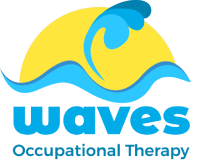Sensory Integration OT Services
Sensory Processing Challenges: Assessment and Treatments can significantly impact the daily lives of both children and adults. As an Occupational Therapist, it’s crucial to understand the complexities of sensory issues and provide effective assessments and treatment strategies. In this article, we will explore the world of sensory processing challenges, the importance of assessments, and the various treatments available.
Understanding Sensory Processing Challenges
Sensory processing challenges refer to difficulties in processing and responding to sensory information from the environment. This can involve one or more of the five senses: sight, sound, touch, taste, and smell. These challenges can be particularly pronounced for individuals with conditions such as Autism Spectrum Disorder, Down’s Syndrome, or Mild Hemiplegia. It’s essential to identify these challenges to provide tailored support.
The Role of a Sensory Assessment
A sensory assessment is the first step in understanding the unique sensory needs of an individual. Additionally, assessments can encompass a wide range of areas, including sensory integration difficulties, visual perception, and balance and coordination. Occupational Therapists play a critical role in conducting these assessments. Moreover, they provide a comprehensive understanding of the individual’s sensory challenges, allowing you to develop effective treatment plans.
Types of Assessments
To evaluate sensory processing challenges, professionals can use a variety of assessments. These include the Evaluation in Ayres Sensory Integration (EASI) and the Sensory Processing Measure (SPM) checklist:
- Sensory Integration Assessment: This assessment examines how an individual’s brain processes sensory information and how it impacts their behavior and daily functioning.
- Visual Perception Assessment: Visual perception difficulties can affect a person’s ability to process and interpret visual information accurately.
- Fine Motor Skills Assessment: Assessing fine motor skills is vital, as difficulties in this area can impact tasks like handwriting and self-care.
- Emotional Regulation Assessment: This assessment evaluates an individual’s ability to manage and regulate emotions in response to sensory stimuli.
- Self-Care Assessment: Assessing an individual’s self-care tasks, such as dressing and feeding, is essential to identify areas where support is needed.
Treatment Approaches
To identify areas where support is needed, professionals can assess an individual’s self-care tasks, such as dressing and feeding. The Self-Care Assessment is a useful tool that asks clients to reflect on their current self-care practices. It supports a person to recognise areas they could improve, and generate ideas for new self-care activities they would enjoy. Treatments can include:
- Sensory Integration Therapy: This therapy aims to improve the brain’s ability to process sensory information, making it easier for the individual to respond to stimuli appropriately.
- Fine Motor Skill Interventions: These interventions can help improve handwriting difficulties and dexterity.
- Emotional Regulation Techniques: Teaching individuals how to manage their emotions in response to sensory challenges.
- Self-Care Training: Assisting individuals in improving their ability to perform self-care tasks independently.

Conclusion
Finally, Sensory Processing Challenges, assessments and treatments are the foundation for understanding these challenges, and effective treatment strategies can make a remarkable difference in the lives of children and adults with sensory issues. By providing support in areas such as sensory integration, fine motor skills, emotional regulation, and self-care, you can contribute to enhancing quality of life.
With the right assessments and tailored treatments, individuals with sensory challenges can achieve improved sensory processing, better emotional regulation, and increased independence in daily activities.




